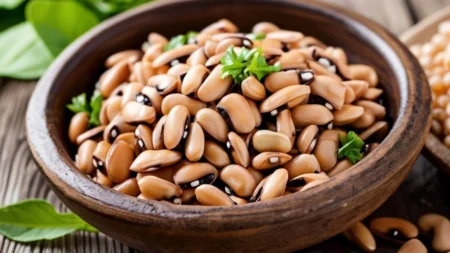Everyone wants to be at a healthy weight. But it’s hard to find the right exercises that really work. This guide will show you why physical activity is key for weight control. It will also talk about how diet and exercise together make a powerful team. Plus, you’ll learn some specific exercises to hit your fitness goals and stay at a healthy weight.

Key Takeaways
- Regular physical activity is essential for effective weight management and long-term weight loss maintenance.
- Combining aerobic exercises, such as brisk walking, jogging, and cycling, with strength training can lead to greater and more sustainable weight loss.
- High-Intensity Interval Training (HIIT) and low-impact exercises like swimming and Pilates can be effective for weight management while minimizing impact on joints.
- Lifestyle modifications, goal setting, and accountability measures are crucial for overcoming barriers to exercise adherence and achieving lasting weight management success.
- Consulting with healthcare professionals can provide personalized guidance and support for developing an effective weight management exercise routine.
The Importance of Physical Activity for Weight Management
Moving your body regularly is key to managing weight.1 It improves your heart health, makes your muscles stronger, and boosts how your body uses food for energy.2 For grown-ups, aim for two and a half hours of moderate to intense activity weekly. Kids, though, should move for at least an hour every day.2
Benefits of Regular Exercise
Getting active helps in losing weight over time.1 Exercises like brisk walking, running, biking, and swimming are great for burning fat.1 But, lifting weights and other resistance activities keep your muscles working well. This is essential for a fast metabolism.1 By mixing both types of exercises, you can manage your weight better in the long run.
Aerobic Exercise for Weight Loss
1 A big research study on losing weight found good results after a year. It showed that just doing aerobics helped men and women shed weight.2 For women who were already at a healthy weight, an hour of active movement daily was needed to maintain it. Things like biking and fast walking kept weight in check for them. But, strolling at a leisurely pace didn’t have the same effect.
Strength Training and Resistance Exercise
1 Studies focused on working out with weights or doing cardio for overweight adults. They underlined the value of strength activities for keeping the pounds off.2 In one study, out of 175 out of shape adults, the ones doing the toughest exercises lost more belly fat.2 For women past menopause, almost one hour of hard aerobic activity, five days weekly, made their waistlines and overall weight drop significantly after a year.

Combining Diet and Exercise for Optimal Results
Regular exercise is key for managing weight. But, just exercising might not lead to big, lasting weight loss.1 When we exercise, our body might eat more to make up for the calories we burn.3 To really drop the pounds and keep them off, combining a healthy, controlled diet with exercise is crucial.
The Limitations of Exercise Alone
Aerobic exercise can help men and women lose weight that matters medically.1 But, relying only on exercise might not result in the weight loss you hope for. Our bodies tend to eat more to make up for the calories lost through exercising.1 This is why it’s vital to watch both what we eat and how much we move.
Synergistic Effects of Diet and Physical Activity
When diet and exercise work together, you can expect bigger weight loss, better body shape, and an easier time staying at a healthy weight.3 Studies show that programs combining both diet changes and physical activity do best for losing and keeping off weight in the short and long term. This beats just dieting or just exercising.3
Mixing a healthy diet with regular exercise is a powerful way to manage your weight. This approach covers both what we eat and the calories we burn. It can lead to reaching and keeping your weight loss goals. Plus, it supports staying at a healthy weight over time.
| Intervention | Weight Loss at 3-6 months | Weight Loss at 12-18 months |
|---|---|---|
| Combined Behavioral Weight Management Programs | -5.33 kg | -6.29 kg |
| Physical Activity-Only Programs | – | – |
| Diet-Only Programs | – | -1.72 kg |
The table above shows the power of mixing diet and exercise. Programs that blend behaviour change, diet, and exercise are much better for weight loss over both short and long periods. They’re more effective than just exercise or dieting on their own.3
weight management exercise routines
Creating a good exercise plan is key to staying healthy and managing your weight.4 We know that obesity is linked to more heart and metabolic diseases.4 To lose weight, you need to burn more calories than you eat.4 This is where a good workout plan helps.4
It speeds up weight loss and keeps you healthy in the long run.4 Many studies show that exercise helps a lot with losing weight.
Aerobic Activities for Weight Loss
Activities like walking, jogging, and swimming are great for losing weight.5 Walking can burn 7.6 to 9.7 calories per minute.5 An experiment over 12 weeks found that walking reduced body fat.5 Jogging burns even more calories, around 10.8 to 13.9 per minute.5
Running is more intense, burning about 13.2 to 17 calories each minute.5 If you prefer cycling, it burns about 6.4 to 8.2 calories per minute at 10 miles per hour.5 Swimming can also help, with 9 to 11.6 calories burned per minute.
High-Intensity Interval Training (HIIT)
HIIT, where you switch between intense exercise and rest, is great for burning fat.5 It makes your body burn fat even after you finish working out.5 This type of training burns more calories per minute than other exercises.5
Low-Impact Exercises for Joint Health
For those with joint problems, choose low-impact exercises like swimming, cycling, and Pilates.5 Pilates, for example, can burn 108 to 168 calories in 30 minutes, depending on the class level.5 Yoga is also helpful, improving waist size and overall well-being.
4 The 4-week program is designed to fit a busy life, lasting 20-22 minutes each day.4 It has a mix of upper and lower body strength, intervals, and light cardio.
4 Building muscle through strength training boosts metabolism.4 Interval training and low cardio help lose weight and recover.4 The plan aims to burn calories every day and improve long-term metabolism over four weeks.
4 Each week focuses on different exercises, increasing in intensity.4 It helps your body get stronger and burns fat more efficiently.4 By the end of the program, your fitness levels should be much higher.
5 Fast weight loss isn’t a good idea because it can harm your health.5 It might cause muscle loss, dehydration, fatigue, or not getting enough nutrients.
Behavioral Strategies for Sustainable Weight Management
To be at a healthy weight, you need more than just exercising and eating right. Behavioral strategies like changing your daily habits and managing your surroundings are key for keeping off weight. They help with sustainable weight management in the long run.6
Lifestyle Modification and Environmental Management
Changing your daily habits for good is lifestyle modification. Environmental management helps set up a space that supports your healthy choices. When you work on both, you boost your chance of long-lasting weight control.6
Setting Realistic Goals and Tracking Progress
Along with lifestyle changes, it’s crucial to set realistic goals and track your progress. This keeps you motivated and moving forward in managing your weight. It’s about creating reachable targets and watching how you’re doing. This shows you what works and what might need a tweak.6
Don’t forget, keeping a healthy weight is a ongoing effort. By using behavioral strategies, you improve your odds of landing at a stable weight for life.7
Overcoming Barriers to Exercise Adherence
Keeping a healthy weight means sticking to your exercise routines. It’s not easy to start or keep going. Exercise adherence can be tough, but you can make it easier. Try to find workouts you truly like. This will make you want to do them more. Working out with a plan and having someone keep you on course can also help a lot8.
Finding Enjoyable Activities
Finding exercises that you look forward to is key. It could be walking outside, a dance class, or even hiking. The important thing is that it interests you. Doing what you enjoy makes it much easier to stick with it. And sticking with it means you get all the good stuff from regular exercise8.
Scheduling and Accountability
Making a simple plan for when you’ll work out really helps. Set aside three, 30-minute chunks in your day for moving around8. It’s also good to work out with others. This could mean taking a class or joining a team. Exercising together means you’re more likely to do it and enjoy extra health perks8. If you can, having a trainer or joining a fitness group offers support and keeps you going towards your goals.
Conclusion
Caring for our weight means looking at the big picture. It’s not just about what we eat. It’s about moving more and changing how we think.1 Mix up your exercise to keep it interesting. Try aerobic exercises, HIIT, and easy ones too. Make changes in your life that you can stick to. Having friends and family support you is key.1
Studies show watching our weight is good for us.1 To lose weight and keep it off, exercise and a good diet are key. This can help with how your body is shaped. Plus, it’s good for stopping unhealthy weight returns.1 For extra help, places like Canton Medical Center offer special weight loss plans. They tailor to what you need.9
Being serious about our health helps us in many ways.9 It makes our heart and blood sugar better. Our minds are clearer, and we lower the chance of memory loss.9 Stick to your weight plan. Overcome any challenges. You’ll see the good effects last a long time.
FAQ
What are the benefits of regular physical activity for weight management?
Regular physical activity is great for keeping weight under control. It helps your heart, makes your muscles stronger, and speeds up your metabolism.
How can combining diet and exercise lead to optimal weight management results?
Adding good eating habits to exercise boosts weight loss. It also shapes your body better and keeps you at a healthy weight over time.
What types of exercise routines are effective for weight management?
Exercises like walking, jogging, and swimming are good for weight management. So are high-intensity exercises and gentle options like Pilates.
How can behavioral strategies help with sustainable weight management?
Changing your lifestyle and managing your surroundings help a lot. Also, aiming for credible goals and tracking your progress keeps you motivated.
What are some ways to overcome barriers to exercise adherence?
Finding activities you love and planning them out can break exercise barriers. Having someone to push you, like a personal trainer or group, also does wonders.
Source Links
- https://www.ncbi.nlm.nih.gov/pmc/articles/PMC5556592/
- https://www.hsph.harvard.edu/obesity-prevention-source/obesity-causes/physical-activity-and-obesity/
- https://www.ncbi.nlm.nih.gov/pmc/articles/PMC4180002/
- https://www.healthline.com/health/fitness/4-week-workout-plan-for-weight-loss
- https://www.healthline.com/nutrition/best-exercise-for-weight-loss
- https://www.ncbi.nlm.nih.gov/pmc/articles/PMC8522530/
- https://www.ncbi.nlm.nih.gov/books/NBK221839/
- https://www.heart.org/en/healthy-living/fitness/getting-active/breaking-down-barriers-to-fitness
- https://cantonmedicalclinic.org/role-of-exercise-in-weight-management/










